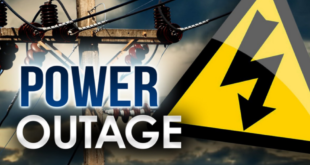HURICANNE LANE - UPDATED 0730 HST:
 The national weather service has issued a Hurricane Warning for the Big Island of Hawaii and a Hurricane watch for the other Islands as Category 5 hurricane Lane makes its way north in the central Pacific.
The national weather service has issued a Hurricane Warning for the Big Island of Hawaii and a Hurricane watch for the other Islands as Category 5 hurricane Lane makes its way north in the central Pacific.
Residents and visitors can expect rainfall to begin today, Wednesday 22 August as the outer bands of the storm make their way toward the state of Hawaii. According to the Central Pacific Hurricane Center, as of 0200 Hawaii time, Hurricane Lane was located ~335 miles south of Kailua-Kona.
Landfall can be expected on the southern and south-western shore of the Big Island with sustained winds of 160 mph and gusts of up to 185 mph.
There is a possibility the storm will lose some of its punch and be downgraded to a Category 4 storm.
Weather Alert 🚨 Hurricane Lane, a Category 5 storm, threatening Hawaii! #TravelTips #Weather @warriors_mom .@SecurelyTravel https://t.co/ZbudGD7ece
— Tamara Davis 🇺🇸 (@warriors_mom) August 22, 2018
County of Hawaii Emergency proclamation.
NOW, THEREFORE, I, HARRY KIM, Mayor of the County of Hawai‘i, do hereby proclaim and declare that a state of emergency exists due threat of imminent disaster on the Hawai‘i Island, effective 7:38 a.m., August 21, 2018, and continuing thereon for 60 days or until further act by this office.
Warnings and Advisories - courtesy of Hawaii News Now.
Hawaii County
- Hurricane warning
- A hurricane warning means that hurricane conditions are expected within 36 hours.
- Flash flood watch
- A flash flood watch will go into effect for the entire state from Wednesday morning through Friday afternoon in anticipation of heavy rains.
- High surf warning
- A high surf warning is in effect from Tuesday night through Thursday night
Maui County
- Hurricane watch
- A hurricane watch means hurricane conditions are possible within 48 hours.
- Flash flood watch
- A flash flood watch will go into effect for the entire state from Wednesday morning through Friday afternoon in anticipation of heavy rains.
- High surf advisory
- A high surf advisory is in effect for east-facing shores of Maui until 6 p.m. Tuesday.
Oahu
- Hurricane watch
- A hurricane watch means hurricane conditions are possible within 48 hours.
- Flash flood watch
- A flash flood watch will go into effect for the entire state from Wednesday morning through Friday afternoon in anticipation of heavy rains.
Kauai County
- Flash flood watch
- A flash flood watch will go into effect for the entire state from Wednesday morning through Friday afternoon in anticipation of heavy rains.
Hawaii News Now Livestream
The livestream is available at these times (all times Hawaii Standard Time)
5am: #Lane is a category 4 storm this morning as it continues WNW toward the state. Maui County has been upgraded to a Hurricane Warning, and a Hurricane Watch has been issued for Kauai County. Visit https://t.co/fUefWa9aTA for a full list of current watches and warnings #hiwx pic.twitter.com/dTBe4b8TUt
— NWSHonolulu (@NWSHonolulu) August 22, 2018
FEMA Hurricane Preparedness Video:
Ready.gov Hurricane Preparedness tips
IF YOU ARE UNDER A HURRICANE WARNING, FIND SAFE SHELTER RIGHT AWAY
- Determine how best to protect yourself from high winds and flooding.
- Evacuate if told to do so.
- Take refuge in a designated storm shelter, or an interior room for high winds.
- Listen for emergency information and alerts.
- Only use generators outdoors and away from windows.
- Turn Around, Don’t Drown! Do not walk, swim, or drive through flood waters.
Prepare NOW
- Know your area’s risk of hurricanes.
- Sign up for your community’s warning system. The Emergency Alert System (EAS) and National Oceanic and Atmospheric Administration (NOAA) Weather Radio also provide emergency alerts.
- If you are at risk for flash flooding, watch for warning signs such as heavy rain.
- Practice going to a safe shelter for high winds, such as a FEMA safe room or ICC 500 storm shelter. The next best protection is a small, interior, windowless room in a sturdy building on the lowest level that is not subject to flooding.
- Based on your location and community plans, make your own plans for evacuation or sheltering in place.
- Become familiar with your evacuation zone, the evacuation route, and shelter locations.
- Gather needed supplies for at least three days. Keep in mind each person’s specific needs, including medication. Don’t forget the needs of pets.
- Keep important documents in a safe place or create password-protected digital copies.
- Protect your property. Declutter drains and gutters. Install check valves in plumbing to prevent backups. Consider hurricane shutters. Review insurance policies.
When a hurricane is 36 hours from arriving
- Turn on your TV or radio in order to get the latest weather updates and emergency instructions.
- Restock your emergency preparedness kit. Include food and water sufficient for at least three days, medications, a flashlight, batteries, cash, and first aid supplies.
- Plan how to communicate with family members if you lose power. For example, you can call, text, email or use social media. Remember that during disasters, sending text messages is usually reliable and faster than making phone calls because phone lines are often overloaded.
- Review your evacuation zone, evacuation route and shelter locations. Plan with your family. You may have to leave quickly so plan ahead.
- Keep your car in good working condition, and keep the gas tank full; stock your vehicle with emergency supplies and a change of clothes.
When a hurricane is 18-36 hours from arriving
- Bookmark your city or county website for quick access to storm updates and emergency instructions.
- Bring loose, lightweight objects inside that could become projectiles in high winds (e.g., patio furniture, garbage cans); anchor objects that would be unsafe to bring inside (e.g., propane tanks); and trim or remove trees close enough to fall on the building.
- Cover all of your home’s windows. Permanent storm shutters offer the best protection for windows. A second option is to board up windows with 5/8” exterior grade or marine plywood, cut to fit and ready to install.
When a hurricane is 6-18 hours from arriving
- Turn on your TV/radio, or check your city/county website every 30 minutes in order to get the latest weather updates and emergency instructions.
- Charge your cell phone now so you will have a full battery in case you lose power.
When a hurricane is 6 hours from arriving
- If you’re not in an area that is recommended for evacuation, plan to stay at home or where you are and let friends and family know where you are.
- Close storm shutters, and stay away from windows. Flying glass from broken windows could injure you.
- Turn your refrigerator or freezer to the coldest setting and open only when necessary. If you lose power, food will last longer. Keep a thermometer in the refrigerator to be able to check the food temperature when the power is restored.
- Turn on your TV/radio, or check your city/county website every 30 minutes in order to get the latest weather updates and emergency instructions.
Survive DURING
- If told to evacuate, do so immediately. Do not drive around barricades.
- If sheltering during high winds, go to a FEMA safe room, ICC 500 storm shelter, or a small, interior, windowless room or hallway on the lowest floor that is not subject to flooding.
- If trapped in a building by flooding, go to the highest level of the building. Do not climb into a closed attic. You may become trapped by rising flood water.
- Listen for current emergency information and instructions.
- Use a generator or other gasoline-powered machinery outdoors ONLY and away from windows.
- Do not walk, swim, or drive through flood waters. Turn Around. Don’t Drown! Just six inches of fast-moving water can knock you down, and one foot of moving water can sweep your vehicle away.
- Stay off of bridges over fast-moving water.
Be Safe AFTER
- Listen to authorities for information and special instructions.
- Be careful during clean-up. Wear protective clothing and work with someone else.
- Do not touch electrical equipment if it is wet or if you are standing in water. If it is safe to do so, turn off electricity at the main breaker or fuse box to prevent electric shock.
- Avoid wading in flood water, which can contain dangerous debris. Underground or downed power lines can also electrically charge the water.
- Save phone calls for emergencies. Phone systems are often down or busy after a disaster. Use text messages or social media to communicate with family and friends.
- Document any property damage with photographs. Contact your insurance company for assistance.
 Travel Securely Securely Travel
Travel Securely Securely Travel






One comment
Pingback: Securely Travel Alert - Hawaii - Cat 4 Hurricane Lane Arrives Friday | Securely Travel